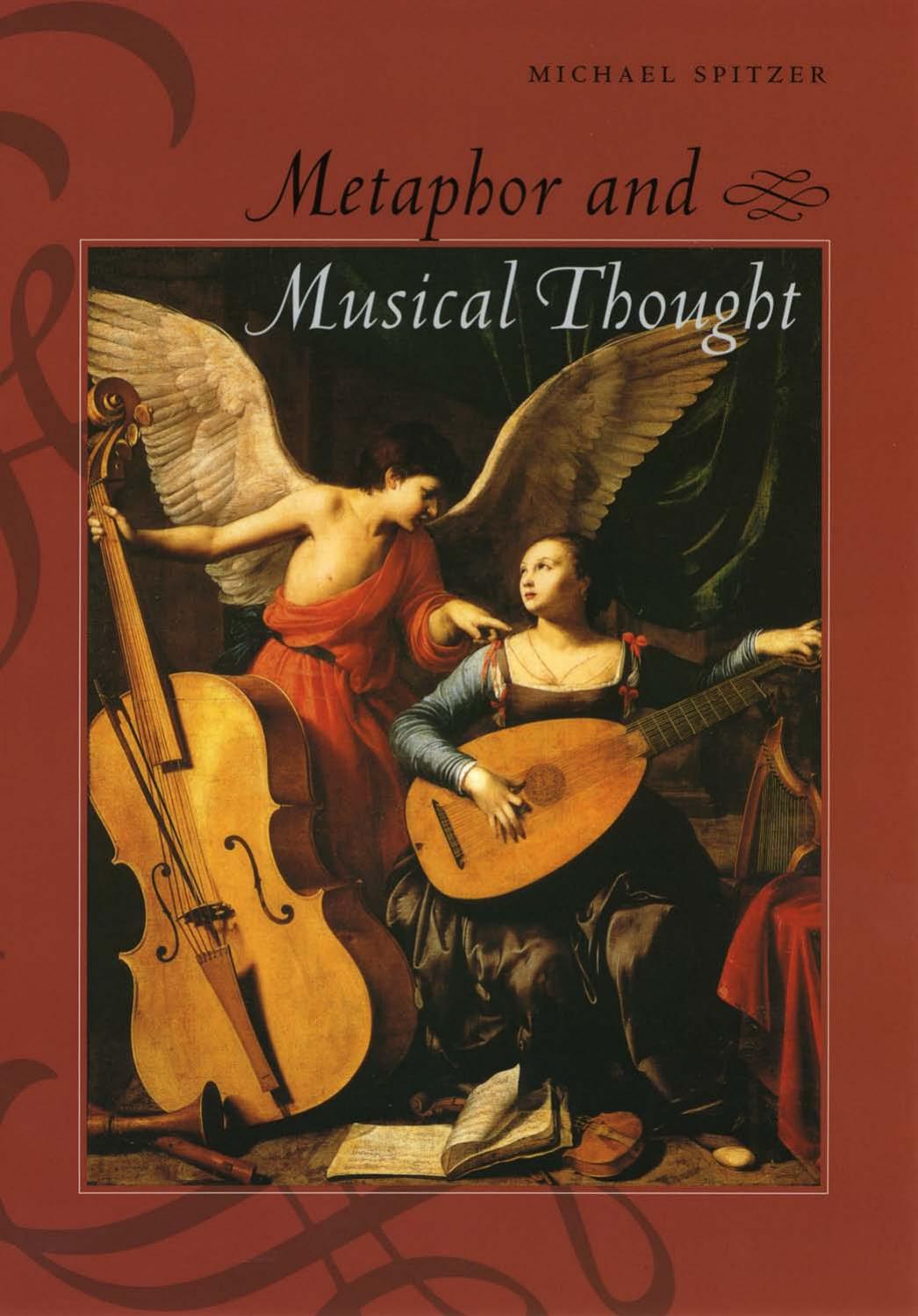Metaphor and Musical Thought by Michael Spitzer

Author:Michael Spitzer [Spitzer, Michael]
Language: eng
Format: epub, pdf
Publisher: The University of Chicago Press
Published: 2004-03-07T16:00:00+00:00
3. PAINTERLY DISCOURSE
Circling back now to chapter 3, it now becomes possible to introduce my theory of musical discourse into the specific context of baroque poetics. In the baroque era, music’s trajectory toward quasi-human density takes on the particular coloring of its pictorial aesthetic, the metaphor of Bildlichkeit, a living hypotyposis. (In chapters 5 and 6, density will assume the forms, respectively, of linguistic immediacy and biological embodiment). Moreover, baroque narrative often compounds Bildlichkeit with the “rhetoric of incarnation,” to borrow a term from Nicolas Malebranche, Lamy’s colleague in the post-Cartesian tradition. The rhetoric of incarnation is the process by which the divine becomes increasingly immanent within the material. Paradoxically, the numerous Passion settings by Schütz and Bach, and by the contemporaries of each, indicate that material becomes alive to the extent that it begins to die. Discourses such as Schütz’s Seven Last Words of Jesus Christ and Bach’s St. John Passion project a trajectory toward death. They follow, therefore, the same course of much seventeenth-century German tragic drama, as described by Walter Benjamin’s famous study, Ursprung des deutsches Trauerspiels (1998).
This rhetoric of incarnation as death is not rhetorical in the conventionally received sense of “rhetoric.” A common modern misconception is that rhetoric pertains to form—the disposition (dispositio) of ideas in time—whereas it mostly concerns material: in musical terms, texture. The most influential rhetorician of the baroque was Gerhard Johannes Vossius (1577–1649), and the shortest of the five books that make up his Die Rhetorices Contractae, sive Partitionum Oratoriarum Libri Quinque (1606) is book 3, on dispositio (see Barner 1970, 269).13 The section on dispositio is also the least prescriptive, since the form of the oration was left to the imagination of the rhetor or composer. Hence it is inadvisable to take Mattheson’s much-discussed section on dispositio in Der vollkommene Capellmeister (1739, 235ff.) too seriously (see Bonds 1991, 86–90).14 In this regard, Lawrence Dreyfus’s charge that most formalist analysis of baroque music is anachronistic is extremely welcome.15 We cannot escape the fact, however, that a baroque work unfolds as a process through time, and that its course is hardly arbitrary. To understand this trajectory, we must look elsewhere. I propose two ideas: first, that the form of baroque music typically unfolds a process of cumulative elaboration, producing ever-increasing density; second, that increasing density creates a rhetoric of incarnation.
The Rhetoric of Incarnation: Schütz’s The Seven Last Words of Jesus Christ
Schütz’s short oratorio provides an object lesson in cumulative hypotyposis. The figure of Christ becomes alive in the course of dying. The process of individuation is set into sharp relief through Schütz’s device of framing the dramatic stile rappresentativo of Christ’s (and the Evangelist’s) utterances with impersonal contrapuntal panels—an Introitus and Conclusio—so that Christ steps out of the crowd (the motet texture) like a sculpture from a frieze or bas-relief. It is also enacted from within, since the seven utterances are increasingly dissonant and broken—that is, figured.
After a choral Introitus, in which the audience is invited to contemplate Christ’s Seven Last Words
Download
Metaphor and Musical Thought by Michael Spitzer.pdf
This site does not store any files on its server. We only index and link to content provided by other sites. Please contact the content providers to delete copyright contents if any and email us, we'll remove relevant links or contents immediately.
The Goal (Off-Campus #4) by Elle Kennedy(13222)
Kathy Andrews Collection by Kathy Andrews(11361)
Diary of a Player by Brad Paisley(7277)
What Does This Button Do? by Bruce Dickinson(5944)
Assassin’s Fate by Robin Hobb(5879)
Big Little Lies by Liane Moriarty(5532)
Altered Sensations by David Pantalony(4884)
Pale Blue Dot by Carl Sagan(4652)
Sticky Fingers by Joe Hagan(3923)
The Death of the Heart by Elizabeth Bowen(3355)
The Heroin Diaries by Nikki Sixx(3339)
Beneath These Shadows by Meghan March(3162)
Confessions of a Video Vixen by Karrine Steffans(3118)
The Help by Kathryn Stockett(3024)
How Music Works by David Byrne(2976)
Jam by Jam (epub)(2890)
Harry Potter 4 - Harry Potter and The Goblet of Fire by J.K.Rowling(2831)
Strange Fascination: David Bowie: The Definitive Story by David Buckley(2706)
Petty: The Biography by Warren Zanes(2583)
